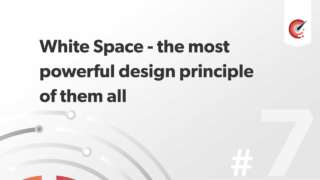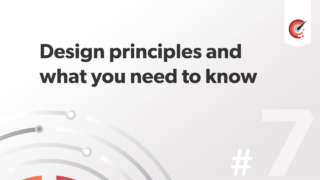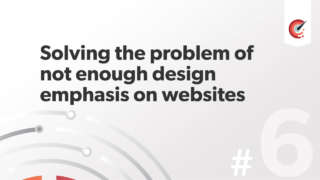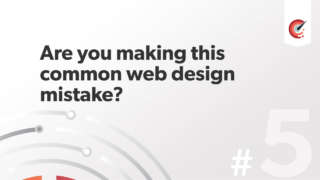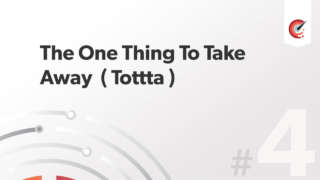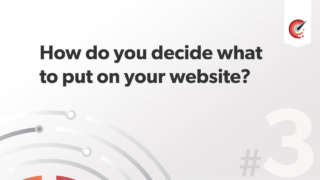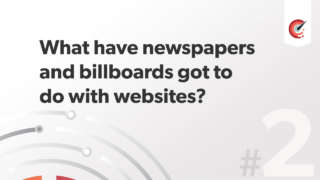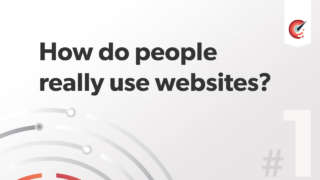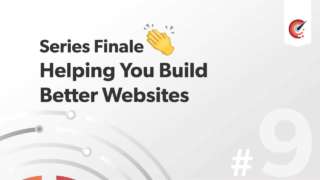
Episode Sponsor:
JM: Welcome this is the second interview on Web Payload and today’s guest is a hugely experienced consultant based in Ireland, it’s Gerry McGovern.
GM: Thanks very much John.
JM: Can you tell us a little about your career and other interests?
GM: I’ve been involved on the Internet since 1994, quite early on, i came across it as a journalist. When journalists were doing research and putting articles together. It seem like this amazing environment that was going to change the world. So one way or another i because fully focused and involved in it and trying to understand it and see how it would work. It has been a long but very interesting journey and some ups and downs but it’s very exciting to be there from the beginning and see how it has involved.
JM: Have you any other interests outside of work?
GM: I used to be involved in music and still am to this day to some degree. I like to read a lot and have other focuses.
JM: One of your areas of expertise in in top tasks. Can you describe what they are and why they matter so much?
GM: It’s around that in any environment there are a huge number of things that are hugely important. And there's a number of peripheral things, which i call the tiny tasks and whether it’s an environment or a websites or a piece of software and it wants to work efficiently it must understand the most important things and make those easiest to do because if you don’t get those right everything else will fall apart. Its like a hotel website very quickly understands its top task will to be to book a bedroom and an airline website it to book a flight. Many organisations feel they don't have those sorts of tasks but we have been it from as i said 1994 and focusing on these sorts of issues and have never met an organisation whether its a university or a bank or an intranet that doesn't have a small number of really important tasks and those need to be clearly understood.and properly managed.
JM: (3:30) Yep great, they certainly are important. How would you go about finding what the top tasks are on a website.
GM: We have come up with a a process which is outlined in the book The Strangers Long Neck about initially drawing up a list of all the top tasks and carefully and going through an exercise to identify all the possible things somebody might want to do. We have done a lot of work with Cisco, and there will be a lot tasks such as download software and configuration, installation, deployment, pricing, returning a product or making a support request. In a university it would be about finding out about courses or lectures, or course materials or the background about the university. If you were living in a city it would be about rubbish collection and libraries and leisure activities and roads and faults, things that matter, people come to websites to do things. We would carefully develop that list. Then we ask people to vote on that list and usually we keep it under a 100. Typically its somewhere between 60 and 80. People are asked to vote very quickly on the lsit and choose the 5 most important tasks to them. What happens and we have done it about 400 times is that you get a pattern, typically the top 5 tasks will get as much of the vote as the bottom 50, so the 5 or so tasks really begin to stand out and get a huge quantity of the vote and these are what are the top tasks and these should be focused on and are the easiest to find and easiest to do. They have the biggest impact on customer satisfaction and the customer being able to do what they need to do on the website.
JM: Are there less task to deal with on smaller websites?
GM: There might be only 1 or 2 top tasks and on a very big website there will be 8 - 10. So there might be a smaller set of top tasks and a smaller website but there are always very critical tasks that a customer is always interested in completing and that’s become the key way that they judge the website and whether they want to use it more. Or the key way they want to judge the website. In many situations if the websites doesn't meet their expectations and they will leave within 5 or 10 seconds and thats often connected with the top task. if they feel the most important thing they want to do on the website isn't immediately available and easy to do then they make a snap judgement about the website and many will leave!
JM: (7:22): Yep great, i guess its like a focus thing but are you talking about omitting these less tasks? How do these less known tasks fit in?
GM: It’s down to a couple of things, time and attention and findabilty. What we find at a lot of times, is that the tiny tasks get in the way of the top tasks and the findabilty. So you identify the top task and find out how well are they performing? Our method in doing that is a time and motion study where like Cisco we take a sample of engineers and we give them examples like download the latest firmware of a router and see how they are performing and how they are able to do those tasks but we often find that tiny tasks often get in the way of search results. So this other content is disrupting the flow and journey of the other top tasks. Where that is occurring that content needs to be removed from the flow of the top tasks and sometimes mean deleting and de-linking and prioritising in search results. The core thing is to focus on the top tasks and the most efficient journey to complete and make sure nothing is getting in way of that journey.
JM: A little analogy is when you are checking out on Amazon they remove everything else and focus on what the user is trying to do.
GM: Yeah, every time you add, you complicate and if you complicate you risk losing the customer, confusing them, and if they don’t complete their task, those top tasks, they are not satisfied and you are not satisfied. They didn't buy that product or do that really important thing they came to do.
JM: Yep, fantastic, as well as top tasks on websites what are some other important areas on websites?
GM: The whole world, we try and orientate what people are trying to do. And they you have all the contributing issues of the success or failure. The number one contributing factor in failure is confusing menus and links. So the basic information architecture is even more important than say search but search is important. We try and orientate what people are trying to do. So everything either helps or doesn’t, so in mobile people are even more focused, so mobile needs to be even more cleaner and faster downloading because of people not having as good bandwidth in a mobile environment. So we try and orientate what a customer is trying to do and a design supports that or it doesn't that.
JM: (11:20): I think the mobile thing is interesting it allows you to absolutely focus on what’s important. Brad Frost was on last week and we talked about removing things and a mega menu with 17 menus and then how do you get that into mobile. The great thing about mobile is that it allows us to focus. How do top tasks fit into the User Experience picture? It sounds like it goes hand in hand is that right?
JM: It does, it gives the user experience manager a focus of what is the most important user experience. Where is the most important experience? The most important experience is the most important thing that the customer wants to do with you. That the highest number of customers want to do with you. So if theres a thing that many people want to do then that’s the place where you focus on having the best experience. Theres no point in having an experience with only a tiny quantity of people want to dow with you. When the area that people want to constantly had a bad experience.So the top task approach gives you that clarity to to actually focus where to focus your energy on the customer experience.
JM: Yep absolutely, In your book The Strangers Long Neck you describe how a board room were arguing over the colour of blue yet when their website and navigation were awful. Can you give other examples of this scenario and how do you get clients to focus on what’s important?
GM: There’s lot of examples John. Board rooms will focus on buying a new technology or a CMS, or on mobile, on latest gadgets, or magical solutions or on the inputs of the environment. A lot of it is down to bringing in appropriate metrics, a lot of metrics are based on visitors or pages. or time on site. Which may or may not be a good thing. In some environments it may be a good thing but in others its confusing, its delivering different kind of metrics and focus on the success of the customer and the ability of the customer to complete a task. We talk a lot about time on task with the customer and a lot of it’s down to changing the type of metrics given to management and thinking differently, think about the satisfaction and the experience of the their customers and what that they want to do in form of short videos. We say here are 3 customers that fail at point X and they are typical of thousands of customers on the website and regularly giving that data to management can those conversations where it can be blue or green.
JM: (15:25): What’s your experience on working with adverts? The best thing would be to remove them, but they their business models may be affected.
GM: I would hate to be a website that’s depending on adverts, its been a losing model since the mid 1990’s. Except Google, it behaves differently, you never seen a banner ad on the home page of Google! Google wait like all good advertisers until the person has done something. Shown their hand so to speak. So you don’t get any adverts until say you “cheap flight to Glasgow” and then you get the ads connected to Easy Jet, BA etc flying to Glasgow. they no longer feel like ads they feel like supporting content. So that’s where the really successful organisations, they wait for the customer and they wait for the customer wants and the website responds to that by saying “you really want Toyota cars” well here is a list of Toyota cars within 30 miles of where you live. That doesn't sound like advertising anymore that sounds like being useful.
JM: The advert thing is interesting. So talking about your books you have published a few, have you any others in the pipeline?
GM: Not at the moment. I’ve published 5 at this stage and taking a bit of a rest. The last one The Strangers Long Neck It goes into detail on how to measure these tasks and thats most of what we do in our consultancy at the moment. Thats the core area of business, we see that growing year on year, so going to continue focus on that space for a while.
JM: (18:20): Can you talk a little about reverse marketing and why it is so powerful?
GM: It’s a little like what i was talking about a few minutes ago John. It’s the customer is the now the advertiser and the marketer. That’s the way you need to think. You go on a journey with the customer rather that send the customer on your journey. Essentially, when you search on the web you are advertising, you are putting the words in “Hotels New York”. You are advertising that you want to stay in a hotel in New York. And then the New York hotels are supposed to respond to you “Oh you are coming on this date, here are some great offers we have for you.” So the customer is much more the marketer, you see it in social media in the ratings and reviews, customers behaving as marketers as products and services. So it’s a new way of thinking about marketing in reverse, now the customer is doing the marketing and the advertising. The organisation needs to facilitate and respond to that marketing and advertising that the customer is doing.
JM: Sound like reversing things are very powerful. All the guests are going to get asked this. What’s something you have learned from a recent project?
GM: It is to stay at things, if you think something is the right thing to do stick at it. I’ve been working with one large client for almost 6 or 7 years. More presenting and doing workshops about the top tasks approach and it seemed like it wasn't going anywhere and i’d go back once a year for a talk and a chat and things seemed to go backwards at some stages. Just recently they decided they would embrace the approach and things are now beginning to move quite quickly and positively but it was a long process. We think that things change so quickly and all these technologies but often organisations don’t change that quickly at all. They take quite a lot of time to understand and adapt to the new environment and if you think something is the right thing to do it will still probably be the right things to do in 3 years. Have the conviction to stick at ideas. Why i have achieved whatever i have achieved has been focus and staying the distance.
JM: Yep, brilliant thats fantastic Gerry. We have covered a lot of stuff about top tasks in there. How do people keep up with you?
GM: There are a couple of ways John. There is a Twitter feed. There is also a weekly newsletter on Customer Carewords that comes out on a Sunday They are the two main ways through the Twitter feed and the newsletter.
JM: Thanks very much Gerry, very much appreciated.
GM: Thanks very much John.


